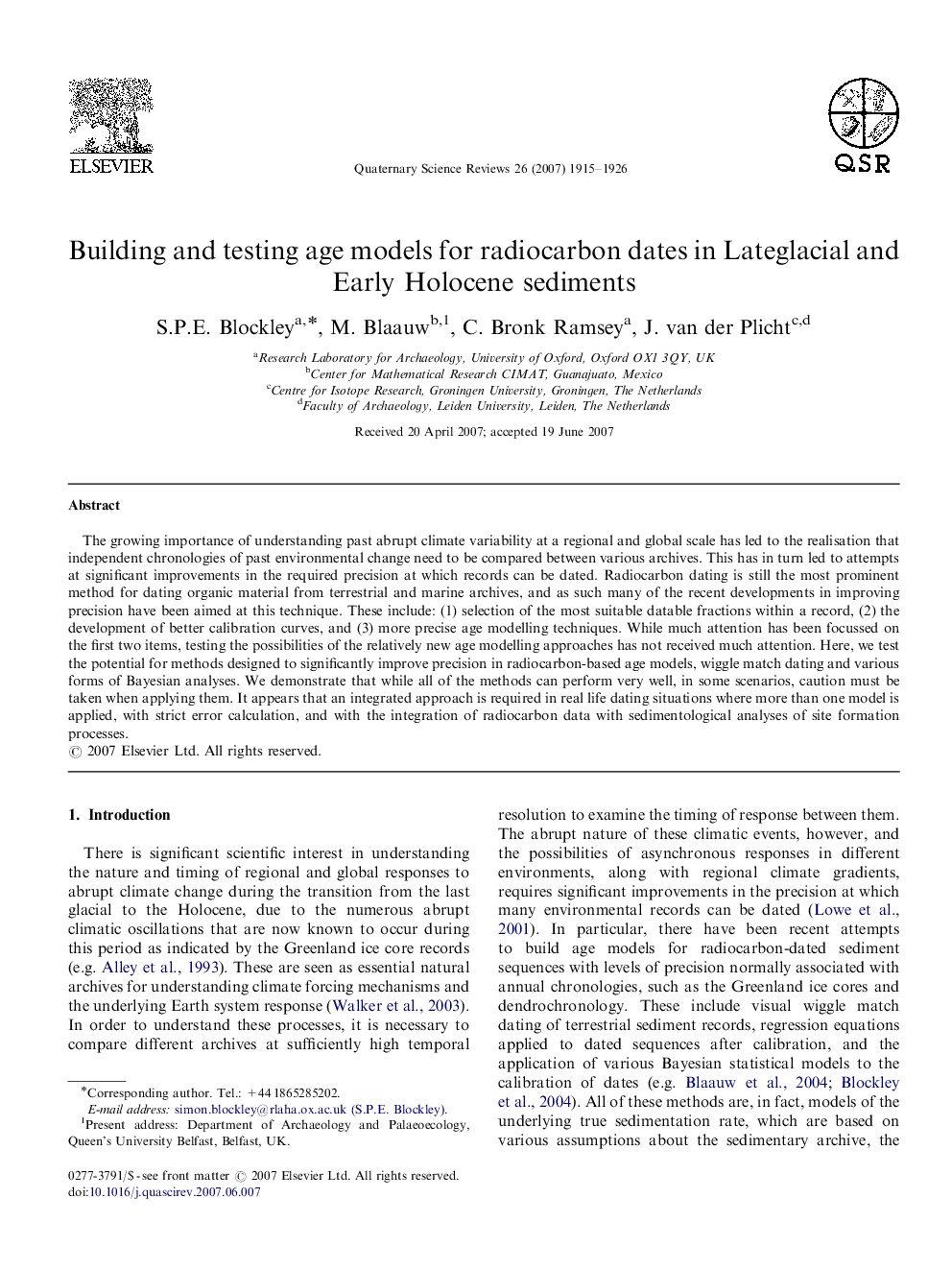| کد مقاله | کد نشریه | سال انتشار | مقاله انگلیسی | نسخه تمام متن |
|---|---|---|---|---|
| 4735669 | 1640964 | 2007 | 12 صفحه PDF | دانلود رایگان |

The growing importance of understanding past abrupt climate variability at a regional and global scale has led to the realisation that independent chronologies of past environmental change need to be compared between various archives. This has in turn led to attempts at significant improvements in the required precision at which records can be dated. Radiocarbon dating is still the most prominent method for dating organic material from terrestrial and marine archives, and as such many of the recent developments in improving precision have been aimed at this technique. These include: (1) selection of the most suitable datable fractions within a record, (2) the development of better calibration curves, and (3) more precise age modelling techniques. While much attention has been focussed on the first two items, testing the possibilities of the relatively new age modelling approaches has not received much attention. Here, we test the potential for methods designed to significantly improve precision in radiocarbon-based age models, wiggle match dating and various forms of Bayesian analyses. We demonstrate that while all of the methods can perform very well, in some scenarios, caution must be taken when applying them. It appears that an integrated approach is required in real life dating situations where more than one model is applied, with strict error calculation, and with the integration of radiocarbon data with sedimentological analyses of site formation processes.
Journal: Quaternary Science Reviews - Volume 26, Issues 15–16, August 2007, Pages 1915–1926